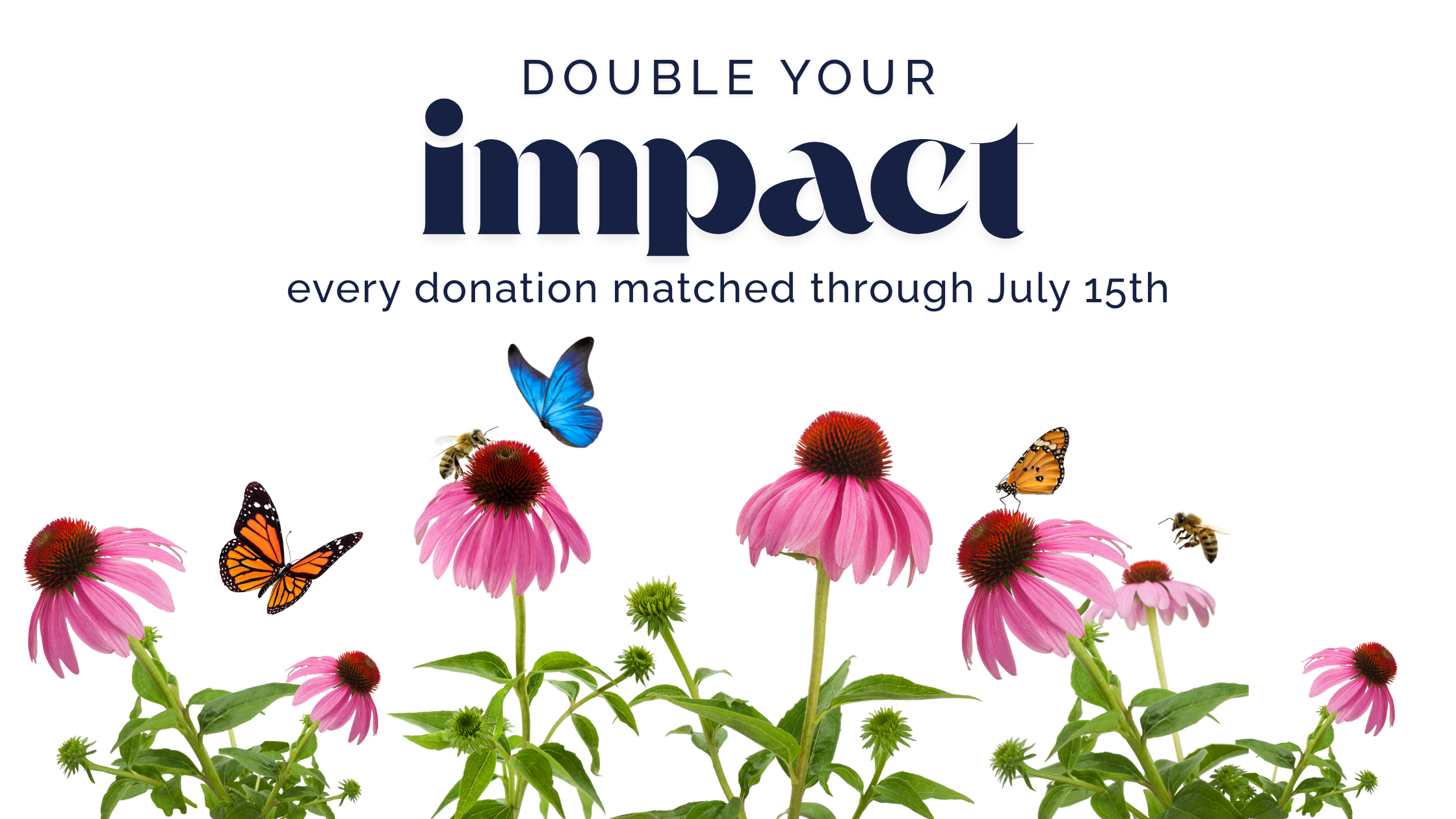Leaving her big native plant garden in Maryland and moving to a small apartment was not easy for Alice. A Princeton resident for the past two and a half years, Alice has transformed her apartment patio into a lush, inviting space filled with beautiful native plants for pollinators.

Lisa from Sustainable Princeton had the opportunity to visit Alice’s beautiful patio garden and learn more about her interest in gardening and share some tips for those in apartments or small spaces looking to start a native plant garden.
From a big yard
In Maryland, Alice bought a house with a big backyard and only two plants – a perfect blank slate! She decided to make the backyard mostly natives and started in the very back of the yard with tall shrubs, planting ground cover, ferns, and native honeysuckle. Adding a little bit each year, the yard was 90% native plants by the time she moved. Research shows that to support nature we need to have a minimum of 70 percent native plants.
Alice learned a lot about native plants from volunteering at Adkins Arboretum and working with students at Washington College who had started a pollinator garden.
To a small patio
Alice’s new apartment patio was just asking for plants. Clusters of containers with native perennials create a herbaceous perennial layer. A hanging basket of Nasturtiums shares a plant stand with a bird feeder, and a plant saucer doubles as a water source and bird bath. Spring perennials include Jacob’s ladder, Geranium, Coral bells, a yellow cultivar of spiderwort, violets, summer Culver’s root, orange coneflowers, red and blue Lobelias for the hummingbirds, fall Asters and goldenrods for the bees, and a few dwarf zinnias for a touch of annual color.






Alice’s favorite plant is the Jacob’s ladder, which is growing in a shared pot with wild Geraniums. They are the first to bloom in the spring, and are a beautiful light blue color.
The variety of native plants makes a complete food web for insects and birds. Alice also grows a few edible plants like lettuce, mint, and thyme.

About half the plants on her patio were grown from seed, some seed mixes. The rest were bought from Bowman’s Hill Wildflower Preserve. The only fertilizer was in the initial container soil mix. Half of the patio is full shade, and half part shade, only a corner has sun for about 2-3 hours. Each morning, Alice will come outside and feed the birds and water the plants. Sometimes she deadheads plants and moves containers around depending on whether they are looking too sunburned or too shaded. The apartment complex landscaping consists of mostly native species such as River Birch trees and the Fothergilla shrubs which frame her patio and create an inviting and rejuvenating space.
Alice is always adding more plants, giving plants and seeds away to friends, and donating them to local schools and the Boys and Girls club via Master Gardeners of Mercer County..
Alice’s Advice for Patio Gardeners
Visit some of the native gardens in this area such as Greenway and Mercer Meadows to see summer and fall blooming meadow plants. Bowman’s Hill is fabulous anytime of year and has both gardens and native plant sales. You can see what the plants look like and get inspiration for how to plant. Mercer Educational Gardens in Pennington also has native and perennial gardens, and hosts public gardening events and programs.
Natives don’t bloom as long as tropical annuals, so plan your garden to always have something in bloom. When you grow in pots, you can plant multiple plants together, but make sure they have the same needs- sun, water, etc.
Don’t cut anything down in the fall, let the seeds stay for goldfinches and flies, spiders and other insects that overwinter using the dried plants. Then, clean up in early spring when the ground and air has warmed to 50 degrees.
Outdoor flower pots make it easier to grow from seeds earlier. You can plant your seeds in the fall, cover lightly and the winter takes care of the stratification process. Plus, seeds are pretty inexpensive to try, versus a $15 plant.
Start small and you can always add over time. Even the smallest space can be a habitat for wildlife and support the local ecosystem.
Alice’s Recommended Resources
Anything by Douglas Tallamy. Nature’s Best Hope and his new book The Nature of Oaks. Did you know Oak trees support the most insects in the eastern region?
Other helpful websites:
Audubon Society for resources on birds
Native Plant Society of New Jersey
Xerces Society for resources on bees
Want to start your own container garden? Homegrown National Park has resources for Container Gardening with Keystone Plants.
Do you have a native garden? Large or small we’d love to feature you! Reach out to us at info@sustainableprinceton.org




